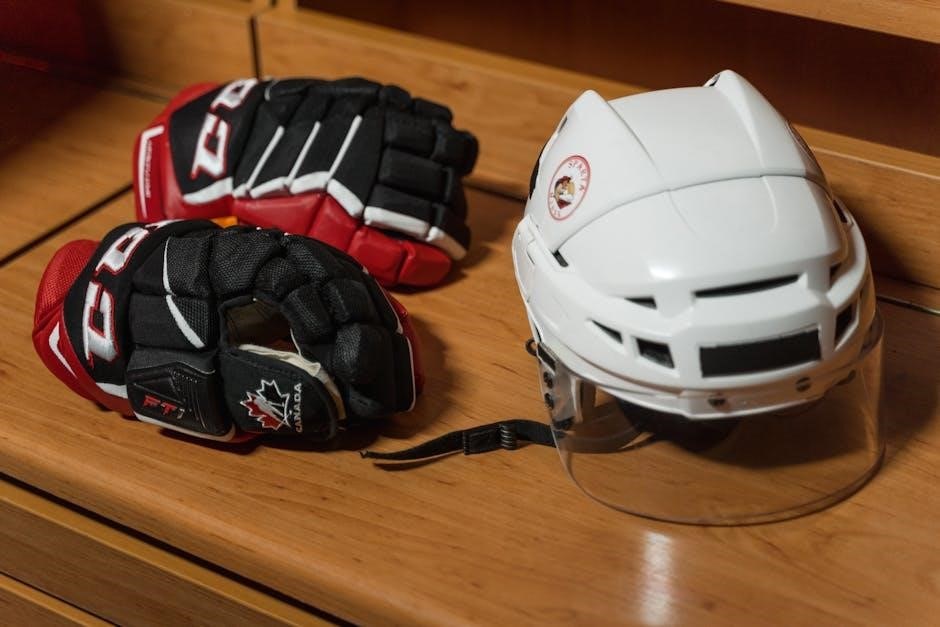Baskerville Muzzle Size Guide: A Comprehensive Overview
Selecting the correct Baskerville muzzle size is paramount for your dog’s safety and comfort. This guide provides a detailed overview of how to accurately measure your dog and choose the appropriate size for a Baskerville Ultra or Anti-Scavenge muzzle, ensuring a secure and comfortable fit.
Understanding Baskerville Muzzles
Baskerville muzzles are designed as humane and comfortable solutions for managing various canine behaviors. Unlike traditional muzzles that restrict panting and drinking, Baskerville muzzles, particularly the Ultra Muzzle, allow dogs to pant, drink, and even accept treats while preventing biting, chewing, and scavenging. These muzzles feature a basket design made from durable, yet flexible, rubber or plastic, ensuring both safety and comfort for the dog.
The design incorporates adjustable straps that secure the muzzle in place, preventing removal while allowing a customized fit. Baskerville offers different types of muzzles, including the Ultra Muzzle and the Anti-Scavenge Muzzle, each tailored to specific needs. The Anti-Scavenge Muzzle includes an additional plastic guard to prevent dogs from picking up and consuming unwanted items from the ground.
Understanding the features and intended use of each Baskerville muzzle type is essential before selecting the right one for your dog. The adaptability of the Baskerville muzzle, like the removable head strap, allows for a personalized fit, catering to the unique needs of each dog.
Importance of Correct Muzzle Sizing

Proper muzzle sizing is crucial for the safety, comfort, and well-being of your dog when using a Baskerville muzzle. A muzzle that is too small can cause discomfort, restrict breathing, and lead to chafing or sores. Conversely, a muzzle that is too large may not effectively prevent biting or scavenging, defeating its purpose. An ill-fitting muzzle can also be easily removed by the dog, rendering it useless.
The correct size ensures that your dog can pant freely, drink water, and even receive treats, which are essential for positive reinforcement training while wearing the muzzle. Accurate sizing prevents the muzzle from rubbing against the dog’s nose or face, avoiding irritation and potential injury. Furthermore, a properly fitted muzzle stays securely in place, providing you with confidence and control in situations where a muzzle is necessary.
Therefore, taking the time to measure your dog’s snout accurately and consulting the Baskerville size chart is an investment in your dog’s comfort and safety. Breed, age, and weight of your dog all make the muzzle size different.
Baskerville Muzzle Types: Ultra vs. Anti-Scavenge
Baskerville offers two primary muzzle types: the Ultra Muzzle and the Anti-Scavenge Muzzle, each designed with specific purposes in mind. The Baskerville Ultra Muzzle is a basket-style muzzle made from a durable, yet flexible, rubber material. Its primary function is to prevent biting while still allowing the dog to pant, drink, and receive treats. The Ultra Muzzle features adjustable straps and a secure buckle, ensuring a snug and comfortable fit.
The Baskerville Anti-Scavenge Muzzle shares the same basic design as the Ultra Muzzle but includes an additional plastic grill or guard at the front. This grill prevents the dog from picking up and consuming items from the ground, such as food waste or other potentially harmful substances. It is particularly useful for dogs with a tendency to scavenge during walks.
Both muzzle types are designed to be humane and comfortable for the dog when properly fitted, allowing for essential behaviors while addressing specific safety or behavioral concerns. Choosing between the Ultra and Anti-Scavenge versions depends on your dog’s specific needs and habits, with the Anti-Scavenge offering an extra layer of protection against unwanted scavenging.
Measuring Your Dog for a Baskerville Muzzle
Accurately measuring your dog’s snout is crucial for selecting the correct Baskerville muzzle size. You’ll need a soft measuring tape to ensure a comfortable and precise measurement. Begin by measuring the length of your dog’s snout, starting from just below the eyes to the tip of their nose. This measurement determines the muzzle’s required length.

Next, measure the circumference of your dog’s snout at its widest point. This is usually about an inch below their eyes. Ensure the tape is snug but not too tight, allowing enough room for your dog to pant comfortably while wearing the muzzle. Record both the length and circumference measurements in inches or centimeters.
When taking these measurements, it’s best to have your dog in a standing position. If your dog is uncooperative, enlist the help of a friend or family member to keep them still. It’s also helpful to offer treats to keep them calm and focused during the process. Once you have both measurements, refer to the Baskerville Muzzle Size Chart to find the appropriate size that corresponds to your dog’s unique dimensions.
Baskerville Muzzle Size Chart: A Detailed Guide

The Baskerville Muzzle Size Chart is an essential tool for selecting the perfect fit for your dog. This chart typically lists muzzle sizes ranging from X-Small to X-Large, each corresponding to specific snout length and circumference measurements. Finding the right size ensures your dog’s comfort and safety while wearing the muzzle.
Each size on the chart provides a range of measurements. For example, a Small size might be suitable for snouts that are 2.5 inches long and have a circumference of 10.5 inches. Carefully compare your dog’s measurements with the chart’s specifications. If your dog’s measurements fall between two sizes, it is generally recommended to choose the larger size to allow for comfortable panting and movement.
The chart may also include breed examples for each size, offering a general guideline. Breeds like Yorkshire Terriers often fit into the X-Small category, while Cocker Spaniels may require a Medium size. Remember that these are just suggestions, and individual dogs may vary. Always rely on your dog’s specific measurements for the most accurate fit. Using the size chart effectively will help prevent discomfort and ensure the muzzle functions as intended.
Breed-Specific Sizing Considerations
When selecting a Baskerville muzzle, breed-specific characteristics play a crucial role in determining the appropriate size. Different breeds possess unique snout shapes and sizes, necessitating careful consideration beyond general size charts. For instance, brachycephalic breeds like Pugs and Bulldogs, with their short, flat faces, often require specialized muzzles designed to accommodate their unique anatomy.
Long-snouted breeds, such as Greyhounds or Collies, will need muzzles that provide sufficient length to prevent discomfort or restriction. The width of the muzzle is also important; wider snouts, common in breeds like Boxers or Staffordshire Bull Terriers, will require a broader muzzle to avoid pinching or rubbing.
Furthermore, consider the breed’s typical activity level. More active breeds may need a muzzle that allows for more freedom of movement and panting. Always measure your dog’s snout length and circumference, and consult breed-specific forums or veterinary professionals for tailored advice. Remember that breed guidelines are merely suggestions; individual variations within a breed can significantly impact the ideal muzzle size.
Fitting the Baskerville Ultra Muzzle
Properly fitting the Baskerville Ultra Muzzle is essential for your dog’s comfort and the muzzle’s effectiveness. Begin by loosening all straps and gently introducing the muzzle to your dog, allowing them to sniff and investigate it. Positive reinforcement, such as treats and praise, can help create a positive association. Carefully slide the muzzle over your dog’s nose, ensuring the basket sits comfortably without pressing against their face.
The neck strap should be securely fastened, allowing enough room to insert two fingers between the strap and your dog’s neck. The optional overhead strap can be used for added security, particularly for dogs prone to escaping. Check that your dog can pant freely and open their mouth slightly while wearing the muzzle. If the muzzle appears too tight or restricts breathing, choose a larger size. Conversely, if it’s too loose, your dog may be able to remove it.
Never leave your dog unattended while wearing a muzzle, and gradually increase the duration of wear to help them acclimate. Regularly inspect the muzzle for signs of wear or damage, and replace it as needed.
Adjusting the Muzzle for Comfort and Safety
Once the Baskerville Ultra Muzzle is initially fitted, careful adjustments are crucial to ensure both comfort and safety for your dog. Observe your dog’s behavior closely for any signs of discomfort, such as pawing at the muzzle, rubbing their face, or excessive salivation. These indicate the need for adjustments.
The straps should be snug enough to prevent the muzzle from easily slipping off, but not so tight that they cause chafing or restrict breathing. Pay particular attention to the neck strap, ensuring it sits comfortably without putting pressure on the throat. If using the optional overhead strap, adjust it to prevent the muzzle from riding up or shifting excessively.

For extended wear, consider adding padding to areas where the muzzle comes into contact with your dog’s skin, such as the bridge of the nose or around the edges of the basket. Regularly check the fit of the muzzle, especially after exercise or changes in weather, as swelling or fur compression can affect the fit. A properly adjusted muzzle allows your dog to pant, drink, and accept treats, promoting a positive experience.
When to Use a Baskerville Muzzle
Baskerville muzzles serve various purposes, primarily focused on ensuring safety and preventing unwanted behaviors. One common use is during veterinary visits, where a dog may react defensively due to pain or anxiety. A muzzle can protect veterinary staff while still allowing them to examine and treat the animal.
Grooming sessions can also be stressful for some dogs, leading to nipping or biting. A Baskerville muzzle provides a safe solution for both the groomer and the dog. In public settings, such as walks or crowded events, muzzles can prevent scavenging, which is particularly useful with the Baskerville Anti-Scavenge Muzzle, and deter unwanted interactions with other dogs or people.
Muzzles are also valuable tools during training to address aggression or reactivity issues. They allow owners and trainers to work on modifying behavior without the risk of harm. However, it’s crucial to remember that a muzzle should not be used as a punishment or for extended periods, but rather as a temporary aid in specific situations. Always pair muzzle use with positive reinforcement and training to address the underlying causes of unwanted behaviors.
Baskerville Muzzle FAQs
Q: How do I determine the right Baskerville muzzle size for my dog?
A: Refer to the Baskerville muzzle size chart and measure your dog’s snout length and circumference. If the measurements fall into different size categories, opt for the larger size to ensure comfort. Breed-specific considerations also play a role, as snout shapes vary significantly.
Q: Can my dog pant and drink while wearing a Baskerville muzzle?
A: Yes, Baskerville muzzles are designed with a basket-like structure that allows dogs to pant, drink, and even take treats. However, it’s crucial to ensure the muzzle is properly fitted to avoid any restriction of movement or breathing.
Q: How long can my dog wear a Baskerville muzzle?
A: Muzzles should only be worn for short periods and under supervision. Avoid using them for extended durations, as this can cause discomfort and anxiety. Muzzles are training aids and should not be used as a long-term solution for behavioral issues.
Q: Can I remove the head strap if my dog finds it uncomfortable?
A: Yes, the head strap on the Baskerville muzzle is removable for added comfort and personalization. If your dog doesn’t need the extra security, you can easily detach it.



